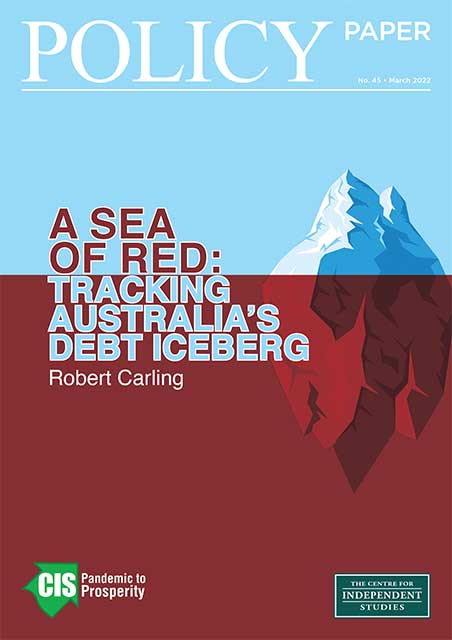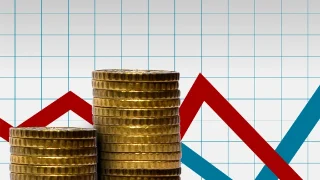
The backdrop to the forthcoming federal and state budgets for 2022/23 is that Australia’s debt has increased sharply during the pandemic since 2019 — and is projected to increase further.
For example, general government sector net debt of the federal and state/territory governments is expected to increase from 22% in 2019 to 41% this year and to 53% in 2025.
Concern about Australia’s debt: summary
The increase in debt raises economic policy issues of major concern. It is reducing fiscal flexibility and the capacity of governments to respond effectively to future crises. It may also act as a drag on economic growth in the longer term.
There is no prospect of debt being paid down as it was in the decade up to 2007. The best that can be expected is that the debt burden will be gradually eroded relative to GDP as the economy grows. However, this will require fiscal discipline that substantially reduces budget deficits.
This increase in borrowings has occurred primarily to finance operating deficits, rather than public investments that will generate future returns. There is some comfort in the fact that the increase in debt is not as large as was estimated 12 or 18 months ago, in the depths of uncertainty about the pandemic.
Since then, budget deficits have been revised down and GDP has been revised up. At the same time, however, the outlook for interest rates has shifted towards higher rates in the near term, which will lift the cost of servicing debt.
Taking all this into account, the increase in debt raises economic policy issues of major concern. It is reducing fiscal flexibility and the capacity of governments to respond effectively to future crises. It may also act as a drag on economic growth in the longer term.
This is the key lesson for the coming round of federal and state/territory budgets, and in particular a warning that expenditure restraint needs to be exercised.
This report provides an update of measures of Australia’s public debt based on mid-year budget reviews released by the Commonwealth, state and territory governments in late 2021.
FURTHER READING: The Looming Iceberg: Australia’s post-pandemic debt risk
Data Sources:
- Parliamentary Budget Office, 2021-22 Mid-Year Economic and Fiscal Outlook. https://budget.gov.au/2021-22/content/myefo/index.htm
- International Monetary Fund (IMF) October 2021. World Economic Outlook Database. General Government Gross Debt (Percent of GDP).
State Budgets:
- 2021-22 Tasmanian Budget. Department of Treasury and Finance (Tasmania). https://www.treasury.tas.gov.au/budget-and-financial-management/2021-22-tasmanian-budget.
- NSW Budget 2021-22 Half-Yearly Review. NSW Treasury. https://www.budget.nsw.gov.au/sites/default/files/2021-12/2021-22_Half-Yearly-Budget-Review-Full-Report.pdf
- Victorian Budget Update 2021-22. Department of Treasury and Finance (Victoria). https://www.dtf.vic.gov.au/sites/default/files/document/2021-22%20Budget%20Update.pdf
- South Australia Mid-Year Budget Review 2021-22. Department of Treasury and Finance (South Australia). https://www.statebudget.sa.gov.au/budget-papers/Mid-Year-Budget-Review-2021-22.pdf
- Western Australia 2021-22 Government Mid-Year Financial Projections Statement. Department of Treasury WA. https://www.wa.gov.au/system/files/2021-12/2021-22-government-mid-year-financial-projections-statements.pdf
- NT Budget 2021-22 Mid-Year Report. Department of Treasury and Finance NT. https://treasury.nt.gov.au/__data/assets/pdf_file/0016/1072420/2021-22-Mid-Year-Report.pdf
- ACT 2021-22 Budget Outlook. https://www.treasury.act.gov.au/__data/assets/pdf_file/0008/1870136/2021-22-ACT-Budget-Outlook.pdf











